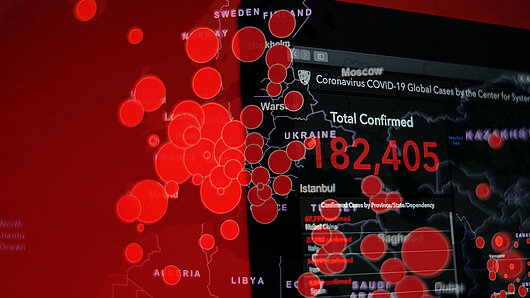High-Performance Computing Center Stuttgart

CIRCE is co-financed by the German Federal Ministry for Science and Education (BMBF) and the State of Baden-Württemberg Ministry for Science, Research and Art (MWK).
HLRS Director Michael Resch explained, "Especially in crisis situations, simulation has an important role to play in supporting political decision making. To achieve this goal, we will bring our collected expertise together and create concepts that will make it possible to put our high-performance computing infrastructure to work quickly and efficiently."
The need for a project like CIRCE became evident in 2020, when the COVID-19 pandemic required the German government to react quickly to prevent an overload of capacity in its health care system. In April of that year, hardware and software experts at HLRS worked together with simulation experts in the Federal Institute for Population Research (Bundesinstitut für Bevölkerungsforschung, BiB) to quickly implement a model on HLRS's supercomputer that predicts demand for intensive care units across Germany up to 4 weeks in advance. This tool, which continues to run on HLRS's Hawk supercomputer and delivers daily information to the federal government once every week, has helped policy makers in decision making concerning public health management related to the pandemic.
CIRCE also builds on expertise that HLRS has been gathering in the HIDALGO project, a European Center of Excellence focused on developing high-performance computing and big data technologies to address global challenges. HLRS has been providing computing infrastructure and expertise to international research partners who are investigating new simulation-based approaches for forecasting migration events and urban air pollution, and for identifying and preventing the spread of false information in social networks.
In the CIRCE project, HLRS will build on these experiences to identify and communicate additional needs for high-performance computing and data analytics resources for crisis management. Through workshops, interviews, and focus groups, the center will build closer contacts with potential partners at the federal and state levels. These exploratory meetings will enable HLRS to better understand how simulation could help address the needs of public authorities and what specific kinds of forecasting tools would provide the greatest benefit. Discussions will also focus on what data government agencies have available and could provide as a basis for predictive tools running on HLRS's systems.
CIRCE will also investigate specific scenarios in which high-performance computing, high-performance data analytics, and artificial intelligence could be implemented during crises. This will include conducting proof-of-concept tests focusing on representative applications of HPC in emergencies. Through these efforts, HLRS intends to gain a better understanding of what activities and procedures are needed to quickly address urgent computing needs, and what current gaps in preparedness currently exist.
In the end, these efforts will prepare HLRS to support government agencies in their responses to future crises, maximizing the usefulness of its HPC systems and expertise for helping to keep people safe and protect critical infrastructures.
— Christopher Williams